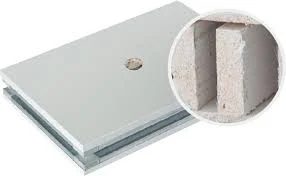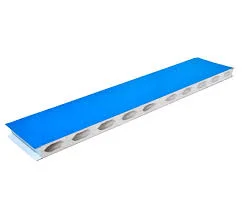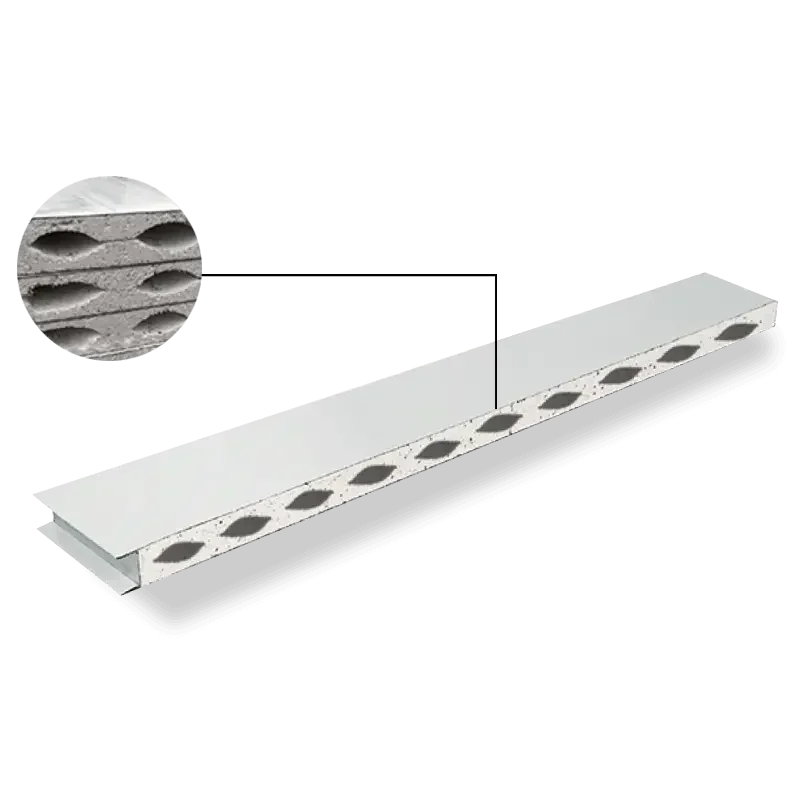In the ever-evolving world of construction materials, the demand for lightweight, durable, and efficient solutions is paramount. Among the innovative materials gaining traction are magnesium oxysulfate (MOS) sandwich panels. These panels offer a unique combination of properties that make them an attractive option for various construction applications. This article explores the advantages of magnesium oxysulfate sandwich panels, their composition, applications, and why they are becoming a preferred choice in modern construction.
Understanding Magnesium Oxysulfate Panels
Magnesium oxysulfate panels are composite materials made from magnesium oxide and magnesium sulfate. The production process involves combining light-burned magnesium oxide with a reactant brine, resulting in stable hydrates of magnesium sulfate. This composition offers several benefits, including fire resistance, moisture stability, and durability, making them suitable for various building applications.

Key Advantages of Magnesium Oxysulfate Sandwich Panels
1. Lightweight Construction
One of the most significant advantages of magnesium oxysulfate sandwich panels is their lightweight nature. The design typically consists of two outer layers of a strong material (such as steel or fiber-reinforced polymer) with a core made from magnesium oxysulfate. This configuration allows for easy handling and installation while reducing the overall weight of the structure. The lightweight properties contribute to lower transportation costs and ease of assembly on-site.
2. Superior Fire Resistance
Fire safety is a critical concern in construction, and magnesium oxysulfate panels excel in this area. With a high fire rating, these panels can withstand extreme temperatures without disintegrating or emitting toxic fumes. This property makes them ideal for use in buildings where fire safety regulations are stringent, such as schools, hospitals, and commercial buildings. Their ability to resist flames helps protect both occupants and property.
3. Moisture Resistance
Moisture can be detrimental to traditional building materials, leading to mold growth and structural damage. Magnesium oxysulfate panels are highly resistant to moisture absorption, making them an excellent choice for environments prone to humidity or water exposure. Unlike wood-based materials that can warp or rot when wet, these panels maintain their integrity over time, ensuring long-lasting performance.
4. Durability and Strength
The structural integrity of magnesium oxysulfate panels is another noteworthy advantage. They exhibit high flexural strength, making them resistant to impacts and other stresses commonly encountered in construction environments. This durability translates into lower maintenance costs over the lifespan of the building, as there is less need for repairs or replacements due to wear and tear.
5. Environmental Friendliness
As sustainability becomes increasingly important in construction practices, magnesium oxysulfate panels stand out as an eco-friendly option. The production process involves using abundant natural resources and generates minimal waste compared to traditional building materials like concrete or wood. Additionally, these panels are recyclable at the end of their life cycle, further reducing their environmental impact.
Applications of Magnesium Oxysulfate Sandwich Panels
The versatility of magnesium oxysulfate sandwich panels allows for a wide range of applications across various sectors:
Commercial Buildings: These panels are ideal for office buildings and retail spaces due to their lightweight nature and fire-resistant properties.
Industrial Facilities: Their strength and moisture resistance make them suitable for warehouses and manufacturing plants where durability is essential.
Residential Construction: Homebuilders can benefit from using these panels in walls and roofs to enhance energy efficiency and safety.
Modular Construction: The ease of transport and installation makes magnesium oxysulfate panels an excellent choice for modular building projects, allowing for rapid assembly on-site.

Installation Process
The installation process for magnesium oxysulfate sandwich panels is relatively straightforward:
Preparation: Ensure that the foundation or framing is level and ready to receive the panels.
Cutting: Panels can be easily cut on-site to fit specific dimensions using standard tools.
Mounting: The lightweight nature allows for quick mounting using mechanical fasteners or adhesives.
Finishing: Once installed, the surface can be finished with various coatings or cladding materials based on aesthetic preferences.

Conclusion
Magnesium oxysulfate sandwich panels represent a significant advancement in construction materials. Their lightweight design combined with superior fire resistance, moisture stability, durability, and environmental friendliness makes them an excellent choice for modern building projects. As the construction industry continues to seek innovative solutions that meet safety standards while promoting sustainability, magnesium oxysulfate panels are poised to play a vital role in shaping the future of efficient construction practices.
Innovative Applications of Magnesium Oxysulfate Sandwich Panels in Interior Design
